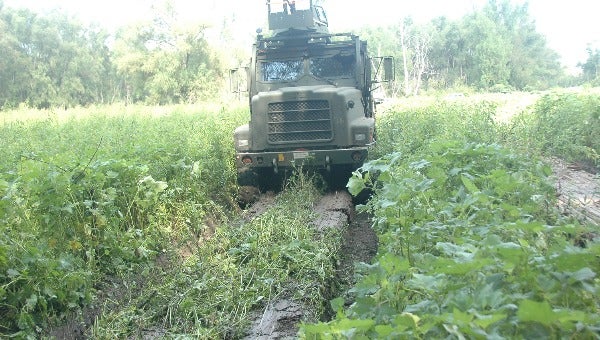ERDC researchers support Army and Marine Corps with Vehicle Cone Index testing
Published 11:07 am Wednesday, October 27, 2021
The U.S. Army Engineering Research and Development Center (ERDC) is working to help the Army and Marine Corps determine if their vehicles can safely cross certain terrains.
A key component to any mission is the ability to get vehicles from one point to another. However, in most cases, it is not as simple as getting in a vehicle and taking off.
Before a vehicle can begin its mission, service members must know the type of terrain being traveled. More importantly, troops need to know whether the terrain can support the weight of their vehicles. Vehicle weights vary, and not all soils are the same.
“Vehicle Cone Index, or VCI, testing measures the soft-soil performance of military vehicles,” said Brent Towne, research civil engineer in the ERDC’s Mobility Systems Branch of the Geotechnical and Structures Laboratory. “VCI testing measures the soil strength needed for a vehicle to make one pass over a specific area of terrain.”
The Army and Marine Corps have certain requirements for each of its vehicles. The testing done by ERDC researchers verifies whether the vehicle meets the specific VCI requirement. The test is also a performance metric for the vehicle and is used to compare it to metrics from other vehicles including vehicles from another military branch.
The VCI research being conducted today has been around since the 1940s. The ERDC developed the methods for VCI testing and continues to use laboratory and field tests to refine the methods used to test soft-soil performance of vehicles for the Army and Marine Corps.
“Both the Army and Marine Corps will have measured soft-soil performance values for their vehicles,” Towne said. “The Army will use these measured performance values to make sure vehicles meet critical mobility requirements. The Marine Corps will use the results to compare performance to other vehicles in its fleet and to inform decisions regarding future upgrades for vehicles.”









